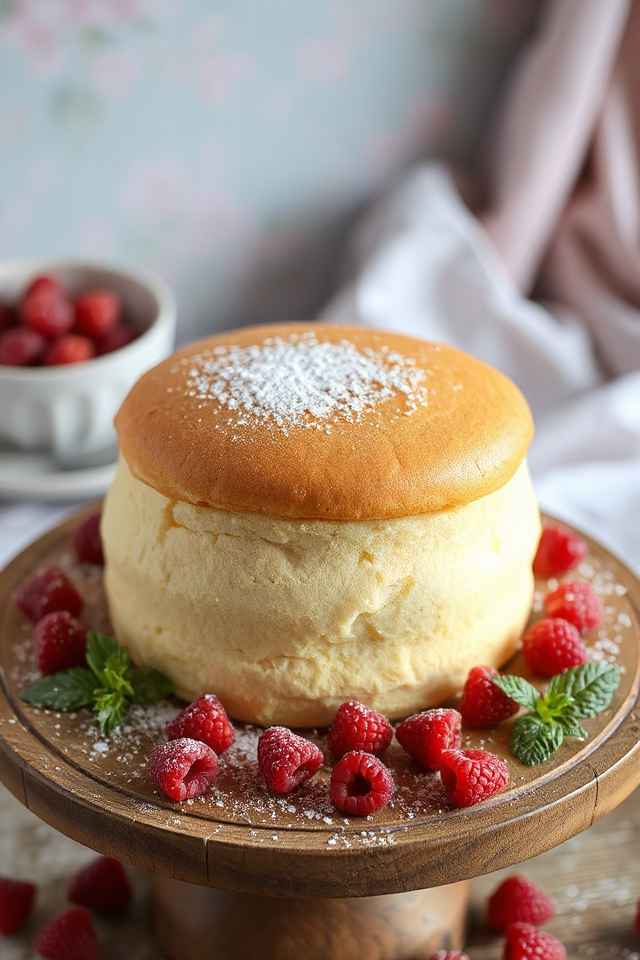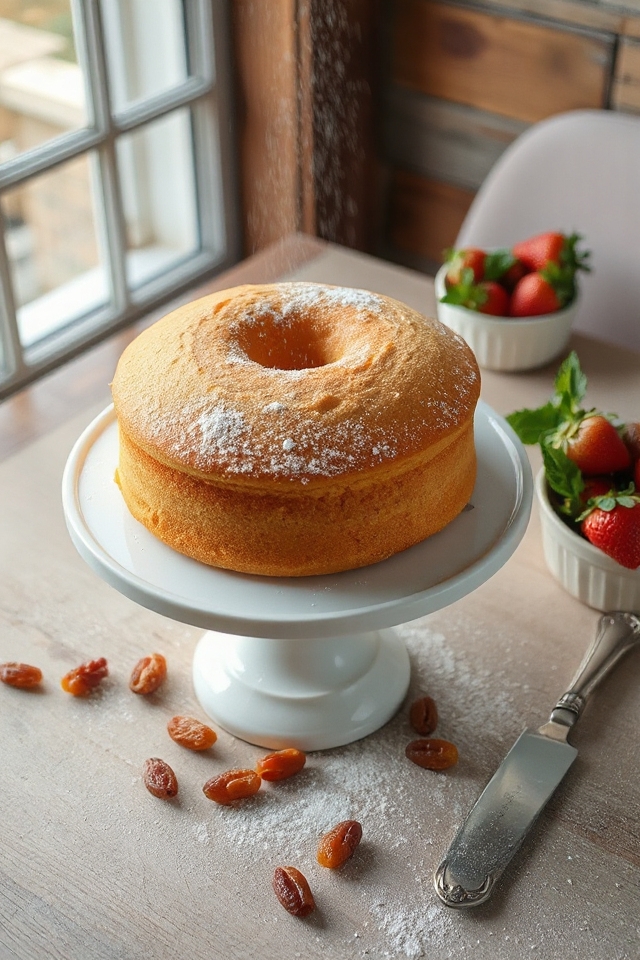Why You’ll Love This Vanilla Sponge Cake Recipe
Whether you’re celebrating a special occasion or just craving something sweet, you’ll absolutely love this vanilla sponge cake recipe.
I’ve made it countless times, and it never fails to impress. The cake’s light and airy texture melts in your mouth, while the rich vanilla flavor keeps you coming back for more.
It’s incredibly versatile, perfect for pairing with fresh fruit or whipped cream. Plus, you don’t need fancy ingredients or equipment to whip it up.
Each slice feels like a treat, making it an ideal dessert for any gathering. Trust me; your taste buds will thank you!
Ingredients of Vanilla Sponge Cake
When it comes to baking a vanilla sponge cake, having the right ingredients on hand is essential. This delightful cake is all about simplicity and the wonderful flavors that come together in each fluffy bite. It’s like a warm hug for your taste buds, don’t you think?
So, let’s plunge into what you’ll need to whip up this delicious treat. You probably have most of these items already in your pantry, which makes it even easier to get baking.
Here’s a handy list of the ingredients you’ll need for the vanilla sponge cake:
- 1/2 cup all-purpose flour
- 1 teaspoon baking powder
- 1/4 teaspoon salt
- 1/2 cup raisins (optional, but they add a lovely touch)
- 4 eggs, separated
- 1/8-1/4 teaspoon cream of tartar
- 1/8 teaspoon salt (yes, another pinch, but it’s vital)
- 3/4 cup sugar
- 1/4 cup vegetable oil
- 1/4 cup water
- 1 teaspoon vanilla extract
Now that we’ve got our ingredients lined up like good little soldiers, let’s talk about a few considerations before you start mixing.
First off, make certain your eggs are at room temperature; they whip up better that way. If you’re going for those fluffy, airy egg whites, it’s a game changer.
Also, don’t skip that sifting step for the flour and baking powder—it helps prevent lumps and guarantees a super light cake.
And if you’re feeling adventurous, toss in some zest of lemon or orange for a fun twist on flavor. You know, just a little something to shake things up.
Enjoy the process; baking is all about having fun and maybe getting a little flour on your face in the process. Happy baking!
How to Make Vanilla Sponge Cake

Now that we’ve gathered all our ingredients for the vanilla sponge cake, it’s time to roll up our sleeves and get into the nitty-gritty of baking this fluffy delight. First things first, you’ll want to preheat your oven to 350 degrees. This part is vital—nobody likes a cold oven when you’re ready to bake.
While that’s warming up, grab your 9-inch springform pan and give it a nice greasing. Don’t forget to line the sides with parchment paper too; it’ll help your cake come out effortlessly later on.
Next, let’s tackle the flour. You’ll need 1/2 cup of all-purpose flour and 1 teaspoon of baking powder. Sift these together three times to make sure they’re light and airy—this step is like giving your cake a fluffy cloud to rest on.
Now, if you’re feeling a bit adventurous and want to add some sweetness, toss in 1/2 cup of raisins into that flour mixture. Coat them well; this little trick helps keep them from sinking to the bottom later.
Now, onto the eggs. Separate 4 eggs, and in a separate bowl, whip the egg whites with 1/8-1/4 teaspoon of cream of tartar and 1/8 teaspoon of salt until you reach those glorious stiff peaks. I always get a bit nervous at this stage—what if they don’t whip up? But trust me, they will.
Once you’ve got that fluffy goodness, gradually add in 3/4 cup of sugar and beat it until stiff peaks form again. In another bowl, combine the egg yolks, 1/4 cup of vegetable oil, 1/4 cup of water, and 1 teaspoon of vanilla extract, and beat that mixture until it’s light and foamy.
Now comes the fun part—gently fold the egg yolk mixture into the egg whites, and then slowly fold in your flour mixture until everything is well-combined.
Now, pour that lovely batter into your prepared springform pan, and it’s time to bake. Slide it into your preheated oven and let it work its magic for about 30-40 minutes. You’ll know it’s done when the top springs back when lightly pressed.
Try not to peek too much; I know how tempting it’s to sneak a glance, but every time you open the oven door, it lets out precious heat. Once it’s done, let it cool for a few minutes before removing it from the pan.
And there you have it, your very own vanilla sponge cake, ready to be devoured or elegantly dressed up with frosting or fruits—or simply enjoyed as is. Happy baking!
Vanilla Sponge Cake Substitutions & Variations
If you’re looking to mix things up with your vanilla sponge cake, there are plenty of substitutions and variations to try.
You can swap all-purpose flour for almond or coconut flour for a gluten-free option. For added flavor, consider using lemon or orange zest instead of vanilla extract.
If you want to enhance moisture, substitute yogurt or sour cream for some of the oil. For a fruity twist, fold in fresh berries or chocolate chips.
You can even add spices like cinnamon or nutmeg for warmth. Each variation brings a new dimension to your cake, making it uniquely yours!
What to Serve with Vanilla Sponge Cake
While enjoying a slice of vanilla sponge cake, I often find myself considering the perfect accompaniments that can elevate the experience.
Fresh berries, like strawberries or raspberries, add a burst of flavor and color. A dollop of whipped cream brings a creamy texture that complements the lightness of the cake beautifully.
I also love drizzling a bit of chocolate or caramel sauce for a touch of indulgence. For a more sophisticated pairing, a scoop of vanilla ice cream never disappoints.
Finally, a sprinkle of powdered sugar on top can make it look even more inviting. Enjoy experimenting with these delightful options!
Additional Tips & Notes
To guarantee your vanilla sponge cake turns out perfectly, I recommend paying close attention to your ingredients and techniques.
First, make sure your eggs are at room temperature; this helps achieve better volume. When folding the mixtures, be gentle—overmixing can deflate your batter.
I also find that using fresh ingredients, especially baking powder, makes a big difference in texture. If you want a richer flavor, consider adding a bit more vanilla extract.
Finally, let the cake cool in the pan for a few minutes before transferring it to a wire rack. Enjoy your baking adventure!
